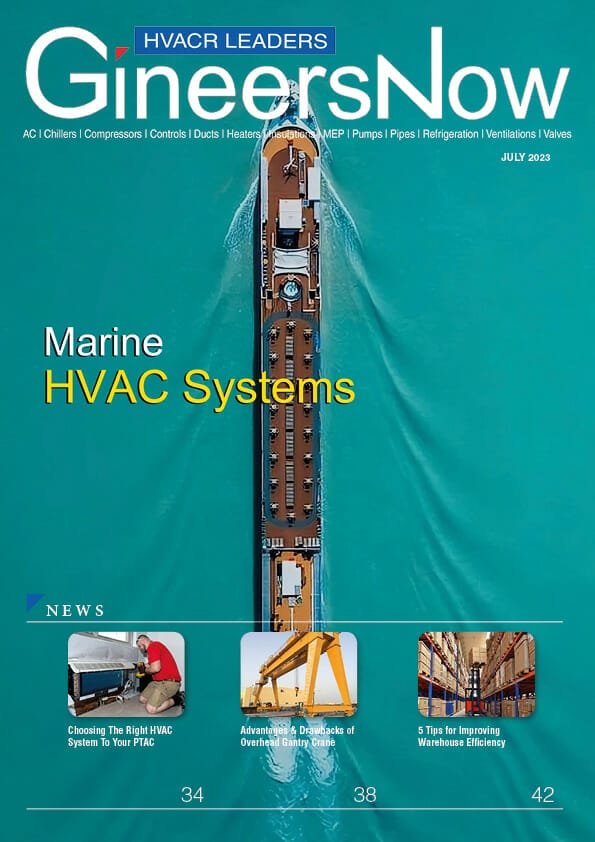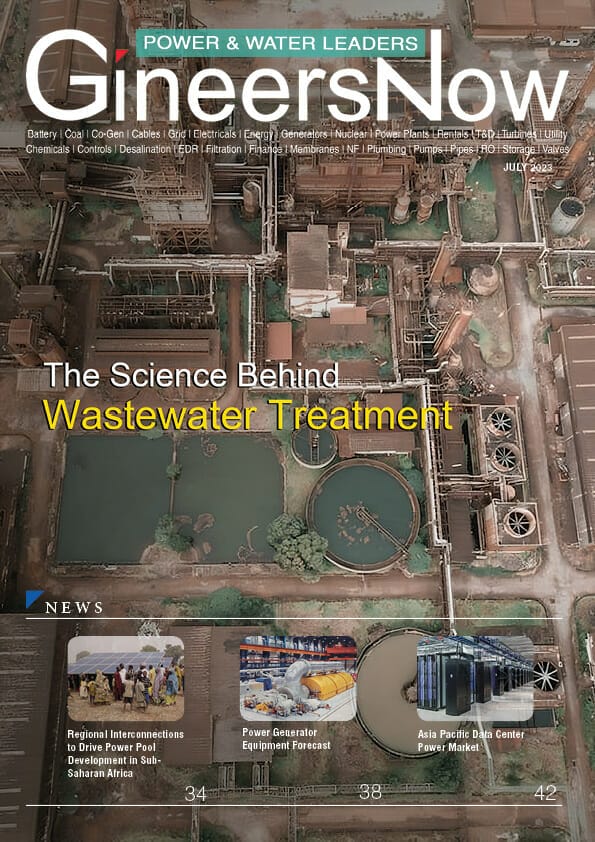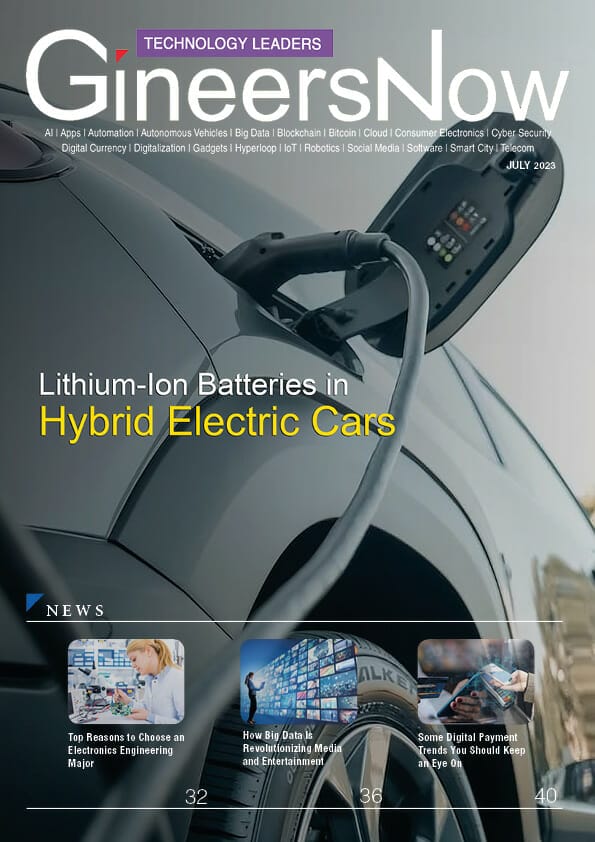Hydroelectric power plants harness the energy of moving water to generate electricity. Water is an abundant and renewable resource, making hydroelectricity a key part of a low-carbon future. Hydroelectric plants are efficient and have low operating costs. In addition, they have a small environmental footprint and can provide other benefits to the local community, such as recreation and flood control.
The Global Energy Crisis
The global energy crisis is one of the most pressing issues facing the world today. With traditional sources of energy like coal and oil dwindling, it is becoming increasingly important to find alternative sources of energy. Hydroelectric power plants are one such alternative source of energy.
Hydroelectric power plants work by harnessing the power of water. Water is stored in a reservoir behind a dam. When the water is released, it spins a turbine which generates electricity. Hydroelectric power plants are considered to be one of the most efficient and environmentally friendly methods of generating electricity.
Despite their many advantages, hydroelectric power plants have some drawbacks. They can be expensive to build and maintain, and they can have a negative impact on local ecosystems. But despite these drawbacks, hydroelectric power plants offer a promising solution to the global energy crisis.
What Are Hydroelectric Power Plants?
Hydroelectric power plants are one of the most common types of renewable energy plants. They use the kinetic energy of flowing water to generate electricity.
There are three main types of hydroelectric power plants: run-of-the-river, storage, and pumped-storage. Run-of-the-river plants are the most common type. They use the natural flow of water to generate electricity. Storage plants store water in a reservoir and release it when the demand for electricity is high. Pumped storage plants pump water from a lower reservoir to an upper irrigation reservoir during periods of low demand. The water is released from the upper reservoir back into the lower reservoir when the demand for electricity is high.
Hydroelectric power plants are a clean and efficient source of electricity. They have low operating costs and produce no air pollution or greenhouse gases.
The Three Components Of A Hydroelectric Power Plant
A hydroelectric power plant is a facility that converts the kinetic energy of flowing water into electricity. There are three main components of a hydroelectric power plant: the dam, the powerhouse, and the penstock.
The dam is perhaps the most important component of a hydroelectric power plant. The dam stores water in a reservoir and releases it when needed to generate electricity. Without a dam, there would be no way to store the water necessary to produce electricity.
The powerhouse is where the magic happens. The powerhouse contains turbines and generators that convert the kinetic energy of flowing water into electricity. The layout of the powerhouse can vary depending on the specific design of the plant, but all powerhouses have one thing in common: they need to be located near the base of the dam so that they can access the water stored in the reservoir.
Types Of Hydropower Plants
There are three types of hydropower plants: impoundment, diversion, and pumped storage.
Impoundment hydropower plants are the most common type of hydropower plant. They use a dam to store water in a reservoir. The water is released from the reservoir and flows through a turbine, which spins a generator to produce electricity.
Diversion hydropower plants (also known as a run-of-river facility) divert water from a river or stream into a pipeline (called a penstock). The water flows through the penstock and spins a turbine, which activates a generator to produce electricity.
Pumped storage hydropower plants store energy in the form of water in an upper reservoir. Water is released from the upper reservoir and flows through a turbine, which activates a generator to produce electricity.
How A Hydroelectricity Plant Works: The Water Cycle
A hydroelectric power plant uses the force of moving water to generate electricity. Here’s how it works:
Water from a river or reservoir flows into the power plant through a pipe called a penstock. The water pressure in the penstock turns a wheel called a turbine, which activates a generator that produces electricity.
The turbine and generator are connected by shafts and gears, and as the turbine spins, it turns the generator to create an electric current. The movement of the water also powers a second wheel called a governor, which regulates the speed of the turbine and keeps it from spinning too fast.
After passing through the turbine, the water is discharged back into the river through another pipe called an outlet works or tailrace.
How Much Power Can Hydroelectric Power Plant Generate?
A hydroelectric power plant can generate a lot of power. The potential energy of water is converted into kinetic energy, which then turns a turbine to generate electricity. Hydroelectric power plants can generate up to 1,000 megawatts of power. That’s enough to power a city of about 500,000 people.
The amount of power that a hydroelectric power plant can generate depends on the volume of water flow and the height of the drop.
Hydroelectric power plants can have a very high capacity factor, meaning they can generate a lot of electricity relative to their size. In fact, hydroelectric power plants are some of the most efficient generators of electricity in the world.
The average hydroelectric power plant in the United States has a capacity of about 79 megawatts (MW). But there are some much larger plants, like the Grand Coulee Dam in Washington state, which has a capacity of 6809 MW.
How Hydroelectric Power Plants Are Transmitted
Hydroelectric power plants are one of the most commonly used renewable energy sources. The potential energy of falling water is converted into electricity, which is then transmitted to homes and businesses.
The process begins with water being diverted from a river or lake into a pipeline, called a penstock. The water then flows down the penstock and into the turbine, causing it to spin. This spinning motion turns a generator, which produces electricity.
The electricity produced by the hydroelectric power plant is then transmitted through high-voltage power lines to substations. From there, it is distributed to homes and businesses.
Pros And Cons Of Hydroelectric Power Plants
Hydroelectric power plants have been used for centuries to generate electricity. They are a renewable source of energy that does not produce greenhouse gases or other pollutants. Hydroelectric power plants can provide a significant portion of a country’s electricity needs.
However, hydroelectric power plants also have some drawbacks. They can be expensive to build and maintain. They can also impact local ecosystems, altering water flows and causing habitat loss.
The Advantages of Hydroelectricity
- Hydroelectricity is renewable and sustainable
- Hydropower plants are a reliable source of energy
- Hydroelectricity is efficient and cost-effective
- Hydroelectricity has a small environmental footprint
- The hydroelectric power plant is versatile and can be used in many different ways
- Hydroelectricity is a clean source of energy
The Disadvantages of Hydroelectricity
- Hydroelectric stations have high upfront costs
- Large hydropower plant has a long lead time
- Hydropower generation plant has high maintenance costs
- Hydroelectricity plants have some social impacts
- Hydropower plants have limited scalability
Is Hydroelectric Power Plant Enough To Save The Environment?
Development of the hydroelectric power plant has been one of the most significant engineering feats of the 20th century. The ability to generate electricity from water has helped to meet the ever-growing demand for energy while also providing a cleaner alternative to fossil fuels. But is hydroelectric power enough to save the environment?
The hydroelectric power plant is a renewable resource that does not emit greenhouse gases or other pollutants into the atmosphere. In addition, it uses less water than traditional coal-fired power plants. However, there are still some environmental concerns associated with hydroelectric power plants.
The construction of a hydroelectric power plant can have a significant impact on the local ecosystem. The damming of a river can disrupt the natural flow of water and affect fish and other aquatic creatures. In addition, the reservoir created by the dam can release methane gas, which is a potent greenhouse gas.
The Cost of Building A Hydroelectric Power Plant
| Lowest Estimate Cost | Highest Estimate Cost | |
| Cost | USD 600/kW | USD 4,500/kW |
The cost of building a hydroelectric power plant can be significant. The initial investment for the construction of a small hydroelectric power plant can range from $4 million to $6 million. The majority of the cost is for civil works – such as dam and powerhouse construction – and equipment. The cost of installing a 1 MW turbine in a new power plant is about US$1.5 million. The total capital cost of a typical large hydroelectric power plant can be around US$10 million per MW of installed capacity.
According to International Renewable Energy Agency, the bulk of large-scale hydropower projects that will be put into operation between the years 2010 and 2019 will have total installation costs ranging from a low of approximately 600 USD per kilowatt to a high of approximately 4,500 USD per kilowatt. On the other hand, because hydropower is so dependent on the precise location where it is installed, it is not unusual for projects to have costs that fall outside of this range. For instance, the price of building hydropower at an existing dam that was developed for other uses could be as low as USD 450 per kilowatt. On the other hand, projects located in distant areas may be economically viable despite the additional costs that are incurred as a result of the absence of local infrastructure. This is owing to the fact that the prices of alternative power generation or grid connection may be significantly higher.
Hydroelectric Power Plant: The Reality Of “Green Energy”
A hydroelectric power plant is a “green energy” source that many people believe to be environmentally friendly. However, the reality is that these plants can have a significant impact on the environment.
Hydroelectric power plants use water to generate electricity. The water is stored in a reservoir and then released through turbines to generate power. While the process of generating electricity from water is relatively clean, it can have a significant impact on the environment.
The construction of hydroelectric dams can alter local ecosystems and disrupt the natural flow of rivers. In addition, the release of water from reservoirs can cause flooding downstream. Furthermore, the operation of hydroelectric power plants can affect fish populations by altering their habitat and blocking their migration routes.
Despite the potential environmental impacts, hydroelectric power plants are a renewable source of energy that can help to reduce our reliance on fossil fuels.
The Latest Technologies In Hydroelectric Power Plants
The latest technologies in hydroelectric power plants are designed to increase efficiency and reduce the environmental impact of these plants. One such technology is the use of high-efficiency turbines, which can increase the plant’s power output while reducing its water consumption. Another promising technology is the use of air-cooled condensers, which can reduce the amount of water required for cooling by up to 90%.
Hydroelectric Power Plants Efficiency
Hydroelectric power plants are considered one of the most efficient forms of energy production. They have the ability to generate large amounts of electricity with little environmental impact. The efficiency of a hydroelectric power plant is determined by its capacity factor. The capacity factor is the ratio of the actual output of a power plant over a period of time to the maximum possible output. For example, a power plant with a capacity factor of 50% would produce 50% of its maximum possible output over a given period of time.
The average capacity factor for hydroelectric power plants in the United States is about 55%. This means that, on average, these plants produce about 55% of their maximum possible output. There are several factors that can affect the efficiency of many hydroelectric power plants, including the type of turbine used, the amount and height of water available, and the size of the dam.
The Future Of Hydroelectricity Power Plants
The future of hydroelectricity power plants is shrouded in potential but fraught with uncertainty. The technology to generate electricity from moving water has been around for centuries, and hydropower dams today provide a significant share of the world’s electricity. But the future of hydroelectricity is uncertain, as the costs of construction and environmental impacts of large dams continue to rise.
In the developed world, many countries are moving away from large hydroelectric dams in favor of smaller “run-of-the-river” plants that have less impact on the environment. In the developing world, however, dam construction is still seen as a way to bring electric power to rural areas. China, in particular, has been investing heavily in hydropower facilities, with plans to more than double its capacity by 2025.
The future of hydropower will largely be determined by politics and economics.
Comparison Of Hydroelectric Power Plants With Other Energy Sources
A hydroelectric power plant uses the kinetic energy of moving water to generate renewable electricity. Compared to other types of electrical energy sources, hydroelectricity has a number of advantages.
For one, it is a renewable resource. Unlike fossil fuels, which are finite, water is constantly being cycled through the Earth’s hydrological cycle and can be used again and again.
Hydroelectricity is also relatively efficient. In a typical coal-fired power plant, only about 30% of the energy in the coal is converted into electricity; the rest is lost as heat. By contrast, a hydroelectric plant can convert as much as 90% of the energy in moving water into electricity.
Finally, hydroelectricity produces no air pollution or greenhouse gases. Burning fossil fuels releases harmful pollutants into the atmosphere, contributing to smog and global warming.
Hydroelectric Power Plant vs. Coal Power Plant
A hydroelectric power plant uses the force of moving water to generate electricity. In contrast, a coal power plant burns coal to produce heat that turns water into steam, which then drives turbines that generate electricity.
Hydroelectric power plants are less expensive to operate than coal power plants, and they have a smaller environmental footprint. Hydroelectric power plants do not emit greenhouse gases or other pollutants, and they require less water than coal power plants.
Hydroelectric power plants are more efficient than coal power plants, and they can generate electricity around the clock. However, hydroelectric power plants require a reliable source of water, and they can be impacted by drought conditions.
Hydroelectric Power Plant vs. Nuclear Power Plant
The debate over which type of power plant is better, hydroelectric or nuclear, has been ongoing for years. Each type of power plant has its own advantages and disadvantages. Here is a comparison of the two types of plants to help you decide which is better for your needs.
Hydroelectric power plants use the energy of moving water to generate electricity. They are usually located in areas where there is a ready water supply, such as rivers or dams. Hydroelectric power plants are less expensive to build than nuclear power plants, and they have very low operating costs. They also have a much smaller environmental impact than nuclear plants. However, hydroelectric plants can only generate electricity when there is enough water flowing through them, so they are not always reliable.
Nuclear power plants can provide electricity generation by using the heat from nuclear reactions to produce steam, which drives turbines that generate electricity.
Hydroelectric Power Plant vs. Tidal Barrage
There are many different types of renewable energy sources available today. Two of the most commonly used are hydroelectric power plants and tidal barrages. Both have their pros and cons, so it is important to understand the difference between the two before deciding which is best for your needs.
Hydroelectric power plants rely on the movement of water to generate electricity. The water is usually stored in a reservoir and then released through a turbine to generate power. Tidal barrages use the natural ebb and flow of tides to generate electricity. A dam is built across a bay or estuary, and as the tide comes in, water is trapped behind the dam. When the tide goes out, the water is released through turbines to generate power.
Hydroelectric power plants are generally more expensive to build than tidal barrages.
Hydroelectric Power Plant vs. Solar Power Plant
Hydroelectric power plants use the energy of moving water to generate electricity. They are very efficient and have low operating costs. However, they require a large amount of land and can impact the environment.
Solar power plants use the energy of the sun to generate electricity. They are more expensive to build than hydroelectric power plants, but they have lower operating costs. Solar power plants also don’t require as much land as hydroelectric power plants.
Hydroelectric Power Plant vs. Geothermal Power Plant
Hydroelectric power plants use water to generate electricity. The water is stored in a reservoir and then released through a turbine. The turbine turns a generator, which produces electricity. Hydroelectric power plants can be located near rivers or dams.
Geothermal power plants use heat from the Earth’s core to generate electricity. The heat is used to steam water, which turns a turbine. The turbine turns a generator, which produces electricity. Geothermal power plants are usually located near hot springs or volcanic areas.
Both hydroelectric and geothermal power plants have some advantages and disadvantages.
Hydroelectric Power Plant vs. Wind Power Plant
Hydroelectric power plants are typically built near large bodies of water, such as river flows or lakes. Water is used to spin turbines, which generate electricity. Hydroelectric power is considered to be very efficient and has a low environmental impact.
Wind power plants rely on the wind to spin turbines and generate electricity. Wind power is considered to be a very clean source of energy with minimal environmental impact. However, wind power can be less reliable than hydroelectric power since it depends on weather conditions.
Takeaway: Hydroelectric Power Plant
In conclusion, the potential of a hydroelectric power plant is great. It is a renewable source of energy that can help reduce our reliance on fossil fuels. The plant can also help to generate electricity in an environmentally friendly way.
The plant can provide enough power to meet the needs of a growing population and help reduce greenhouse gas emissions. The plant is also flexible and can be adjusted to meet changing energy demands. With continued investment and development, the hydroelectric power plant could play a major role in meeting the world’s energy needs.
Read GineersNow Power & Water Magazine for FREE
Editor’s Note
Could Hydroelectricity Power Plant’s Moving Water Be The Answer To Our Energy Woes?
In a world where the energy crisis is a daily topic of conversation, it’s no surprise that people are looking for new and innovative ways to power our planet. Hydroelectricity has been around for centuries, but could it be the answer to our current energy woes?
Hydroelectricity is a type of renewable energy that uses water to generate electricity. The water is stored in reservoirs and then released through turbines, which spin and generate power.
A hydroelectricity power plant produces electricity by using the kinetic energy of flowing water. The current energy crisis is a result of the world’s reliance on fossil fuels, which produce greenhouse gases that contribute to climate change. Hydroelectricity is a renewable source of energy that does not produce greenhouse gases. The construction of hydroelectric power plants can help to reduce the world’s dependence on fossil fuels and help to solve the current energy crisis.
Current Energy Crisis And Renewable Energy
The current global energy crisis is a major problem facing the world today. With the increasing demand for energy, and the limited resources available, it is becoming more and more difficult to meet the needs of the world’s population. The solution to this problem lies in finding alternative sources of energy that are renewable and environmentally friendly.
There are a number of different renewable energy sources that can be used to replace traditional fossil fuels.
Advantages And Disadvantages Of Hydroelectric Plants
Hydroelectricity is a renewable energy source that can be used to generate electricity. There are many pros and cons to using hydroelectricity. Some of the pros include that it is a renewable resource, it does not produce greenhouse gases, and it is a reliable source of energy. Some of the cons include that it requires a large amount of water to generate electricity, and it can have negative impacts on the environment.
Why Haven’t Hydro Power Plants Been Used More?
Despite being one of the oldest methods of generating electricity, large hydro power, and small hydro electric generation have been underutilized in recent years. There are many reasons for this, including the cost of dam construction and environmental concerns. Some believe that hydroelectricity is not a viable option for the future because it is not renewable, but this is not true. Hydroelectricity is a renewable resource that has the potential to provide a large amount of clean energy.
Click below to read the magazine




















